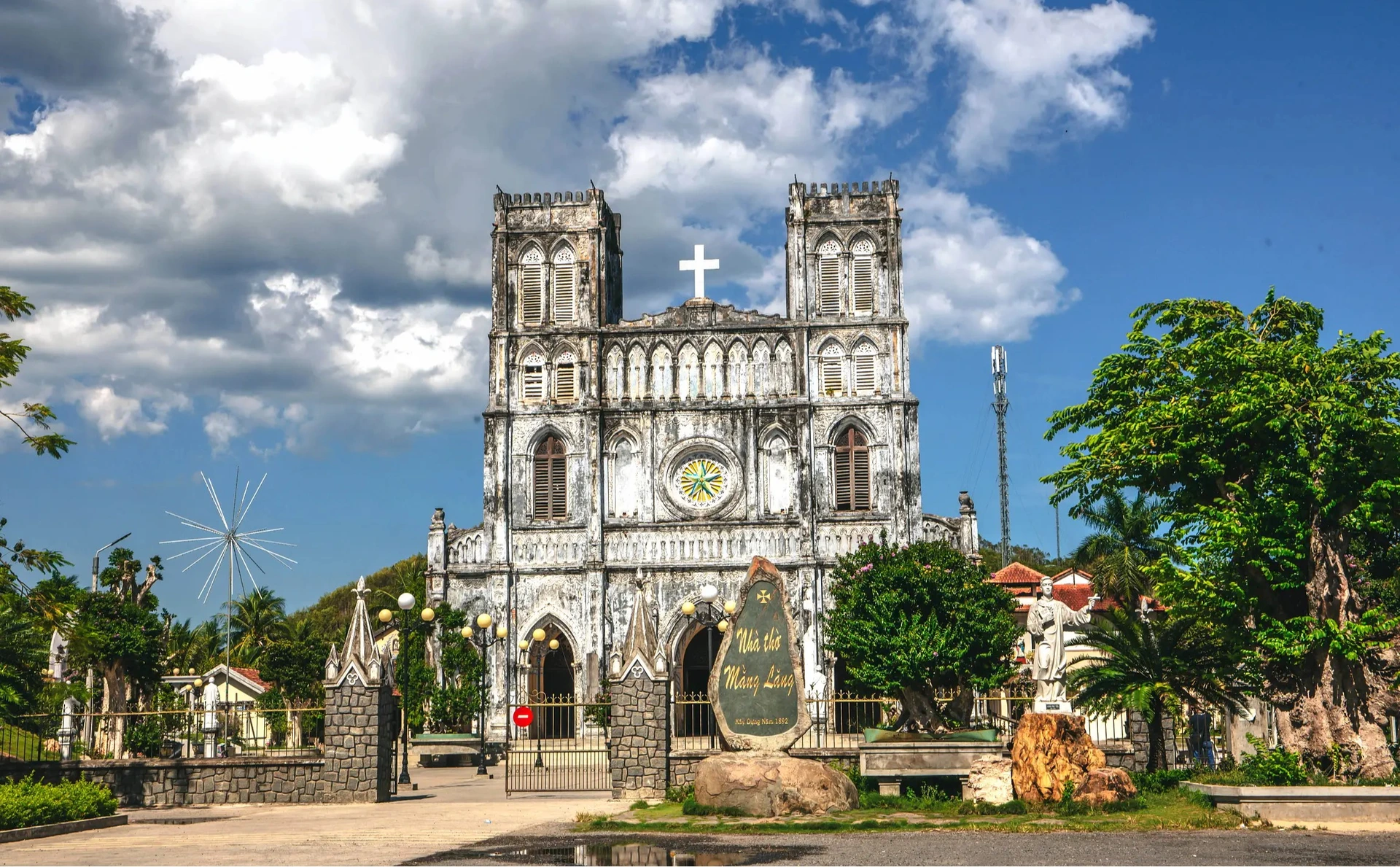Going back in time more than 100 years ago, An Thach is a desolate land, covered with dense forests with many woody trees, oval leaves, and purple-pink flowers called mang lang. People in the area saw that and named Mang Lang Church after the name of the popular tree at that time. Up to now, An Thach has no trace of this ancient tree, but it has been permanently attached to the name of the relic for more than a century.
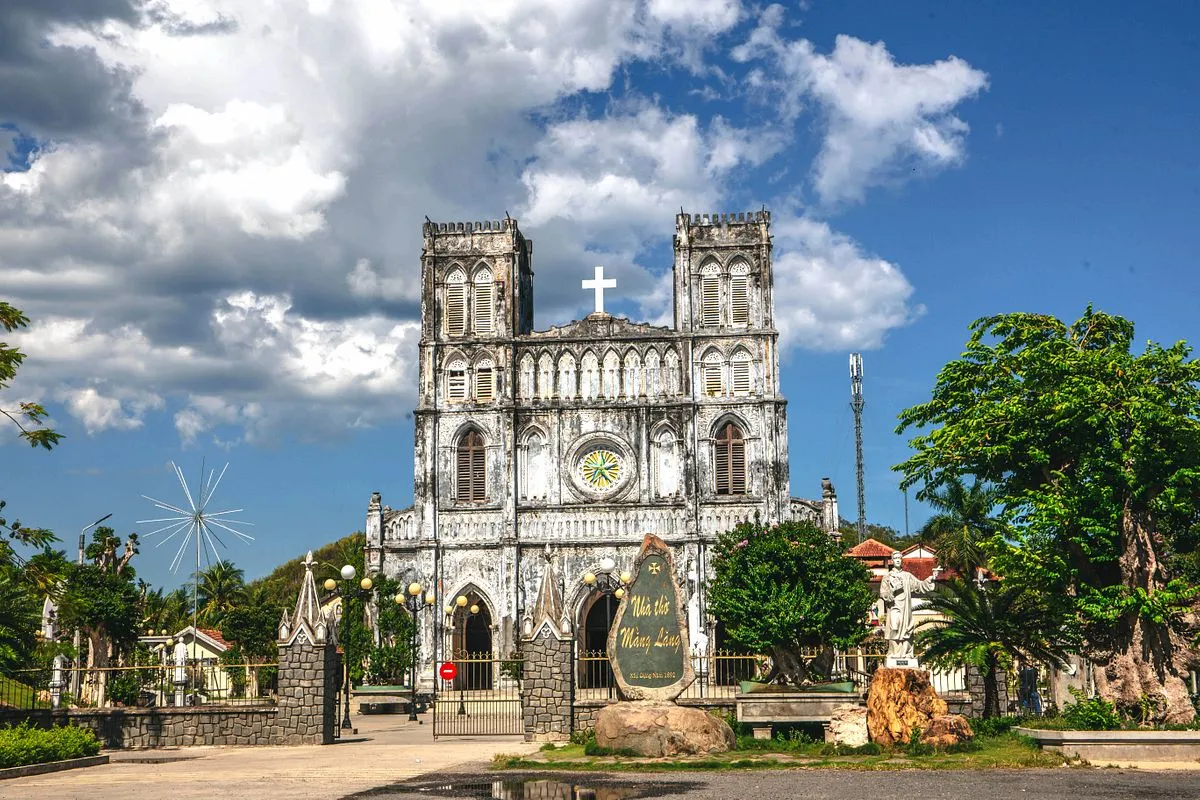
According to records introduced at the church, the Mang Lang church was started in 1892 by French priest Joseph de La Cassagne, also known as Father Co Xuan. It took 15 years from the time the first brick was laid for the church to take shape and come into operation. Father Co Xuan is also the first parish priest of Mang Lang parish. Currently, in the foundation of the cathedral, a stone stele is still engraved with his name and a brief history of the work in French.
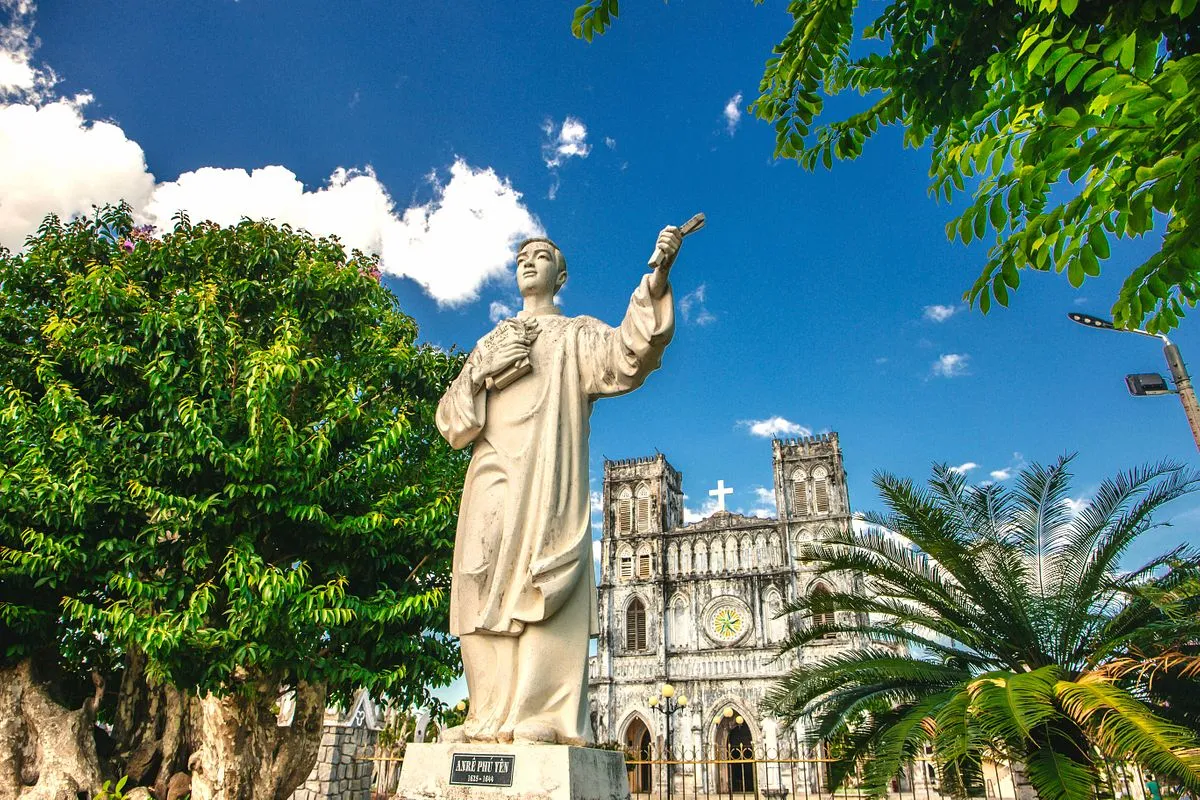
Statue of Blessed Anne Phu Yen in front of Mang Lang Church.
The Mang Lang Church was built during a period when the Catholic faith was conditioned to spread more widely in the territory of Dai Nam, when the imperial policy of proselytizing and expelling parishioners became less harsh. In the book The Catholic Church of Vietnam, author Nguyen Hong Duong wrote: "This period began with the Peace Treaty of the Year of the Tiger (1862) of the Nguyen Dynasty, which included the content that the Nguyen Dynasty abolished the ban on religion. It is noteworthy that in 1869, King Tu Duc issued two decrees, one of which allowed Catholics to gather in separate villages, with a Catholic chief."
Located on a 5,000 m campus2, Mang Lang church is surrounded by green gardens. Under the foliage, the vast courtyard catches the shadow of the tall building. The rows of stone chairs are silent, lying in straight rows.
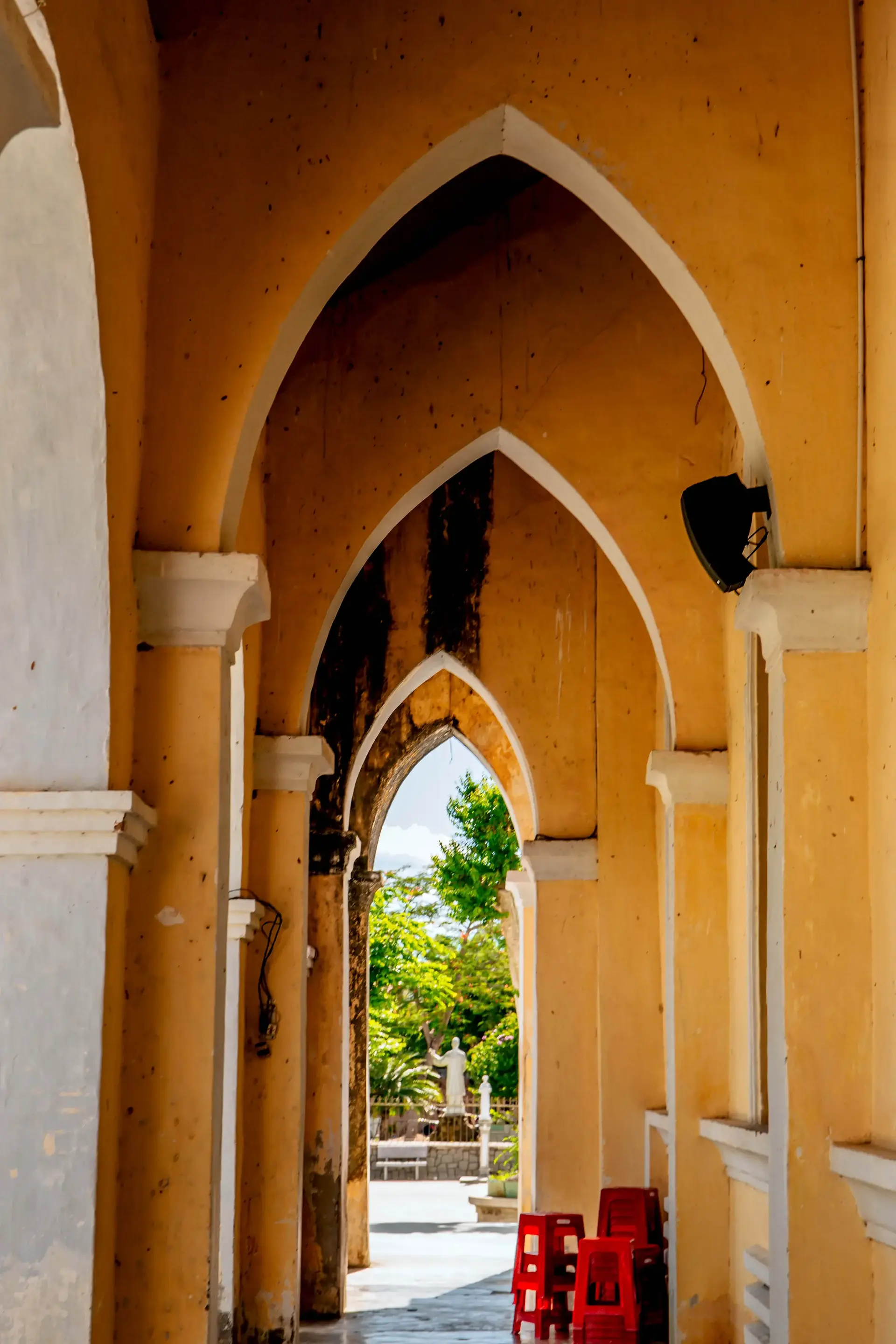
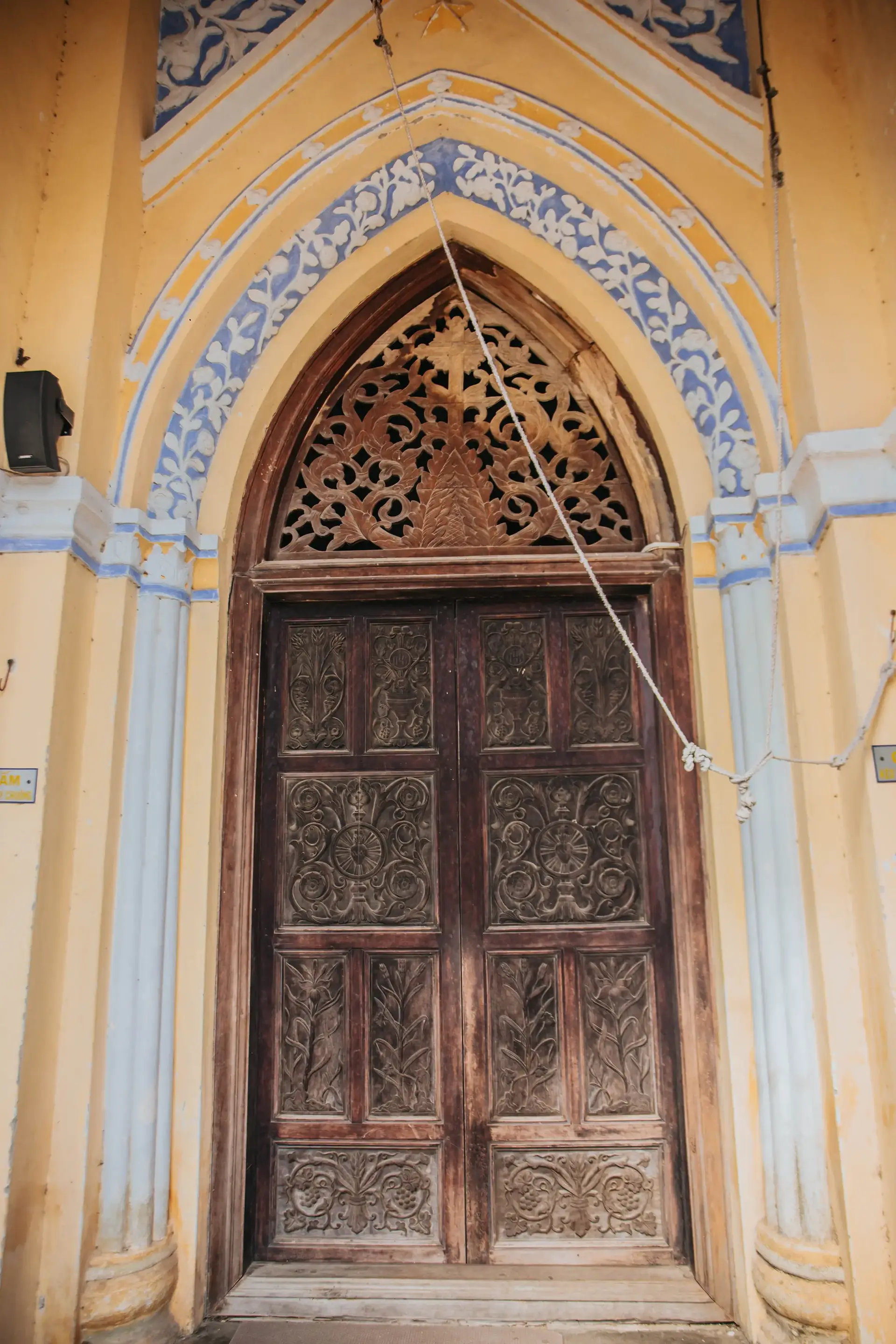
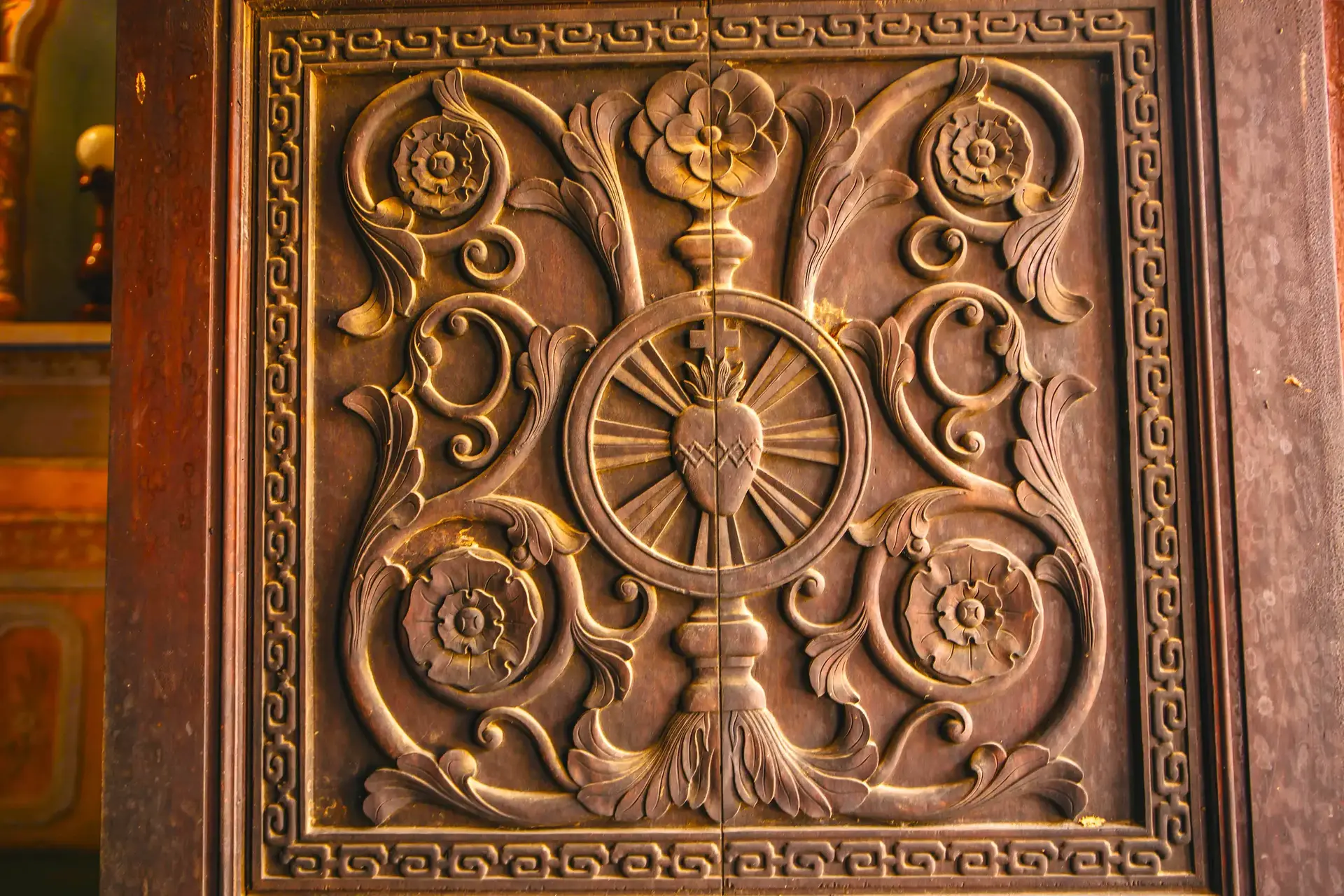
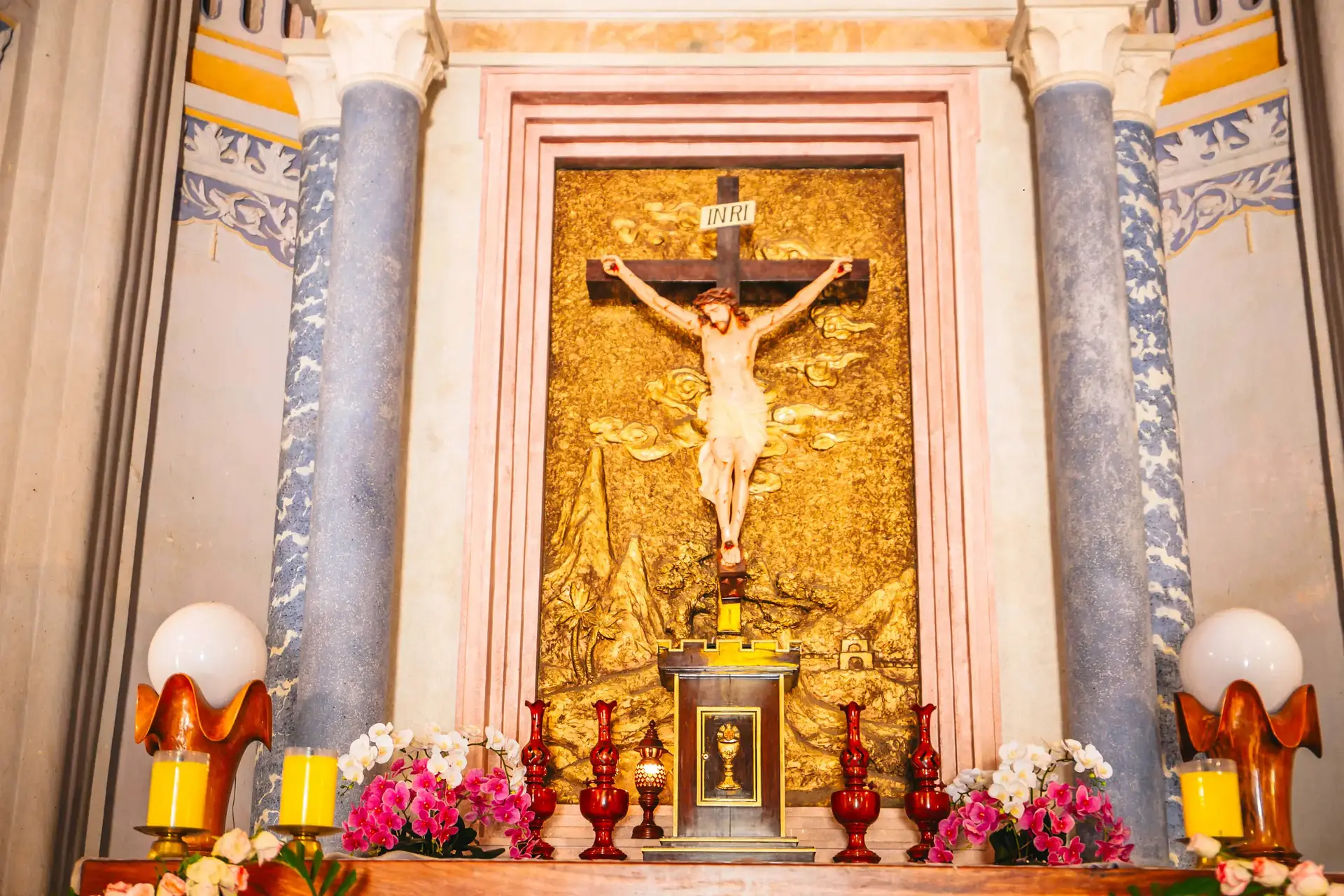
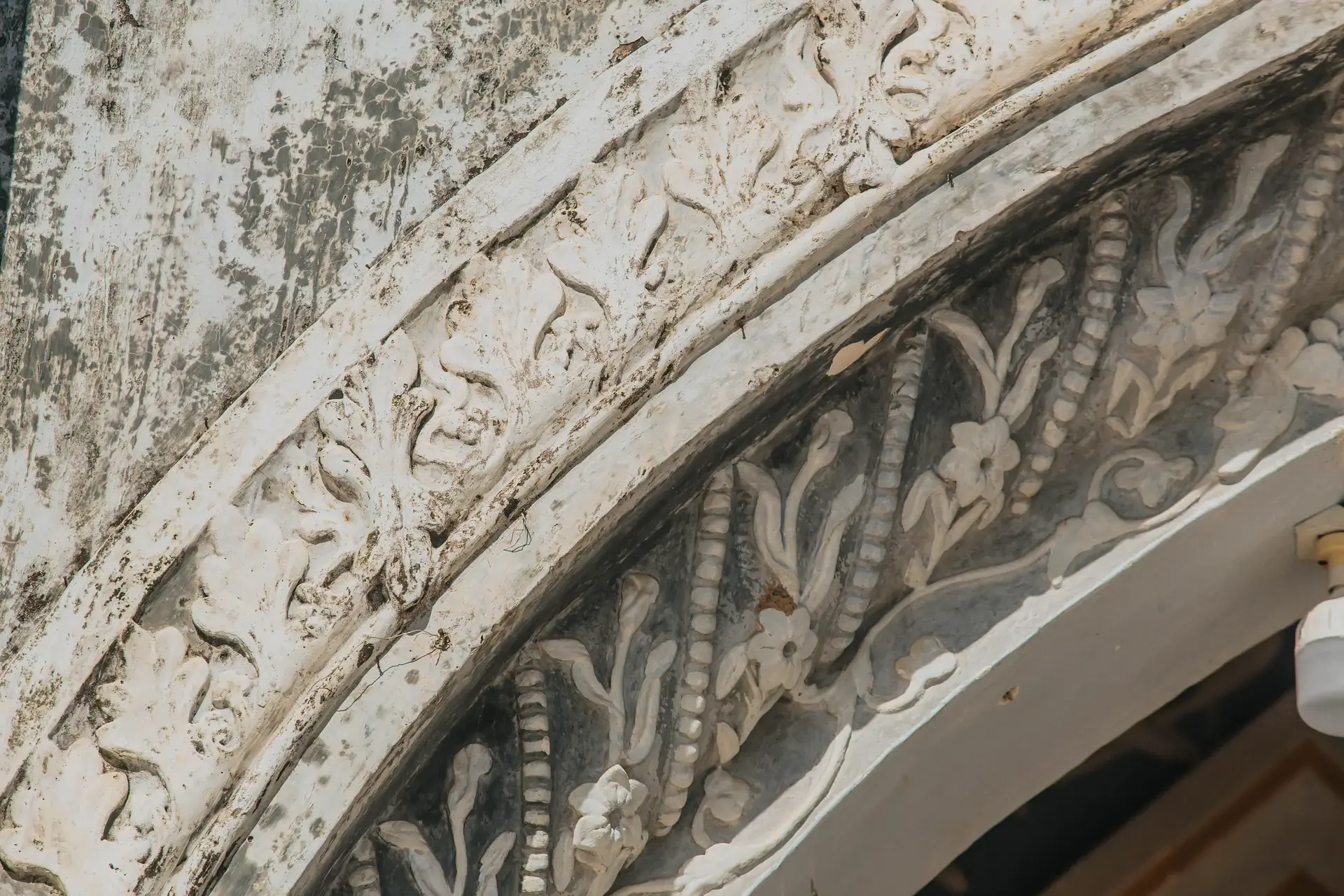
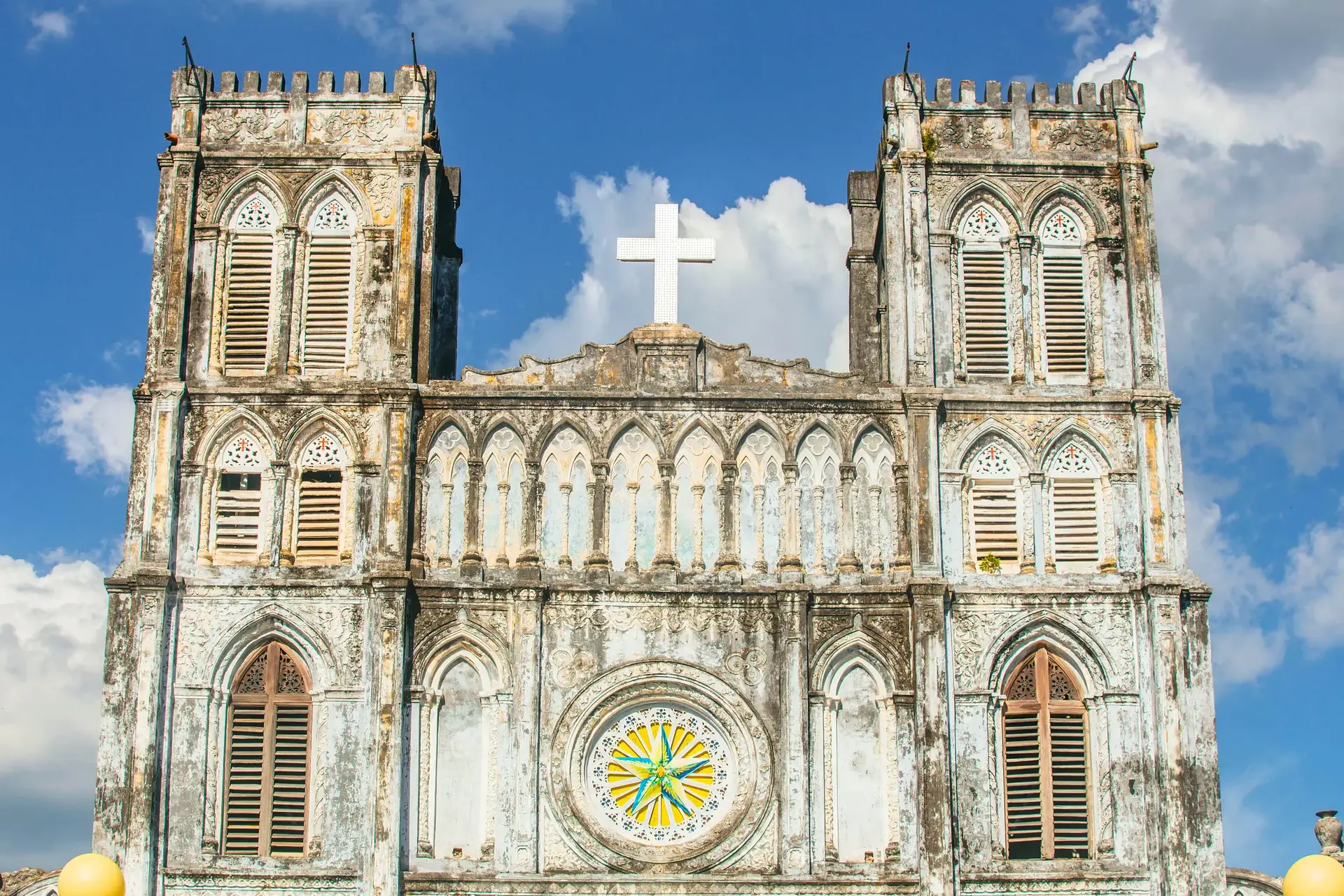
Mang Lang Church is built in the gothic style, the typical architectural style of cathedrals as well as many European civil works. Gothic architecture originated in France, developed from the second half of the Middle Ages in Western Europe and was in vogue until the end of the 16th century. Gothic architecture is characterized by wide, curved domes, pointed arches, high masonry walls and many windows. However, after more than a century, Mang Lang Church is now dressed in a gray and faded robe. The closer you get, the more obvious the footprints of time appear, imprinted on the cracks and peeling on the walls.
Besides Mang Lang Church, many Catholic churches built centuries ago still exist today. Compared to other gothic works such as the Cathedral (Hanoi), Notre Dame Cathedral (Ho Chi Minh City), Phat Diem Church (Ninh Binh), Mang Lang Church is smaller in scale and the architecture is also somewhat simple. After many restorations, some parts of the oldest church in Phu Yen have changed compared to the original version. However, gothic architectural features are still clearly present.
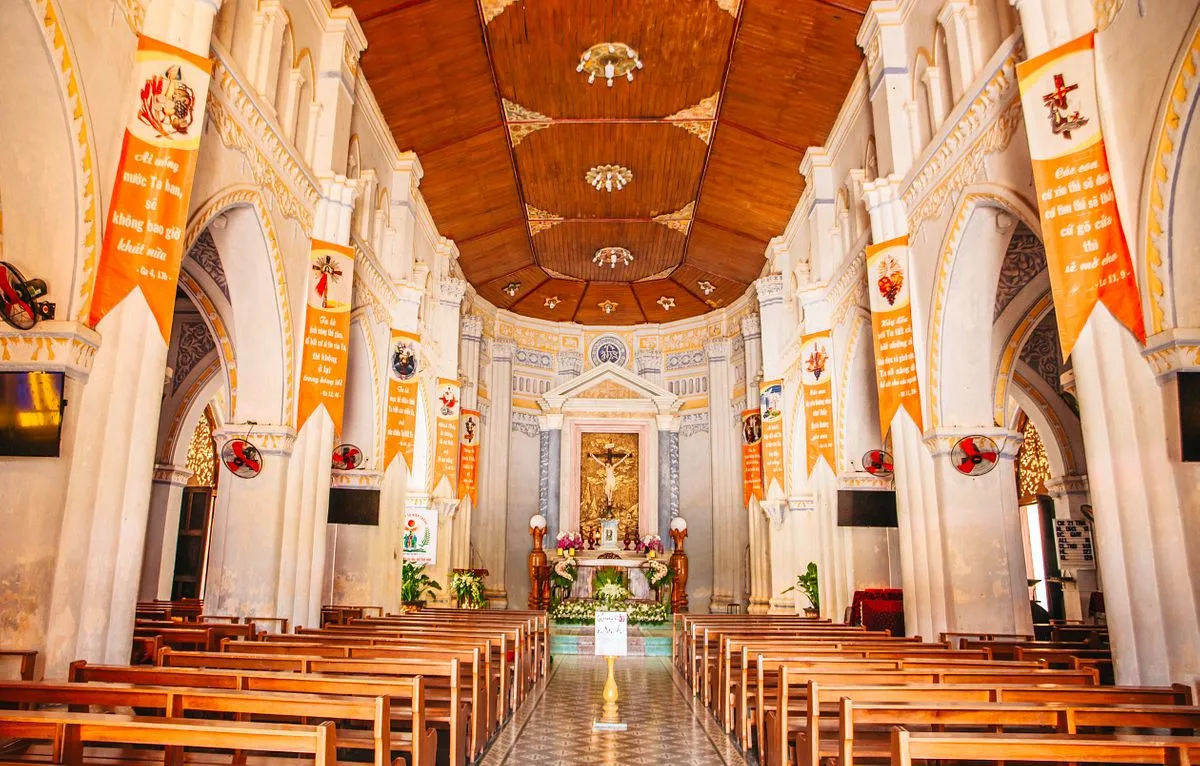
Stepping through the main door, the vast, magnificent space of the cathedral opened. The atmosphere was calm and quiet, and the breath of a hundred years echoed in every wall and arch. After being damaged in a major storm in 1924, the ceiling of the cathedral was remade of flat wood, no longer a curved, wide, soaring dome.
The art decoration of Mang Lang church is quite sophisticated and meticulous. In front of the church, on the arches and pillars of the house, it is not difficult to see European-style decorative patterns, but intertwined are pure Vietnamese carvings on the wooden doors. This is the intersection between European and Eastern lines of Mang Lang Church.
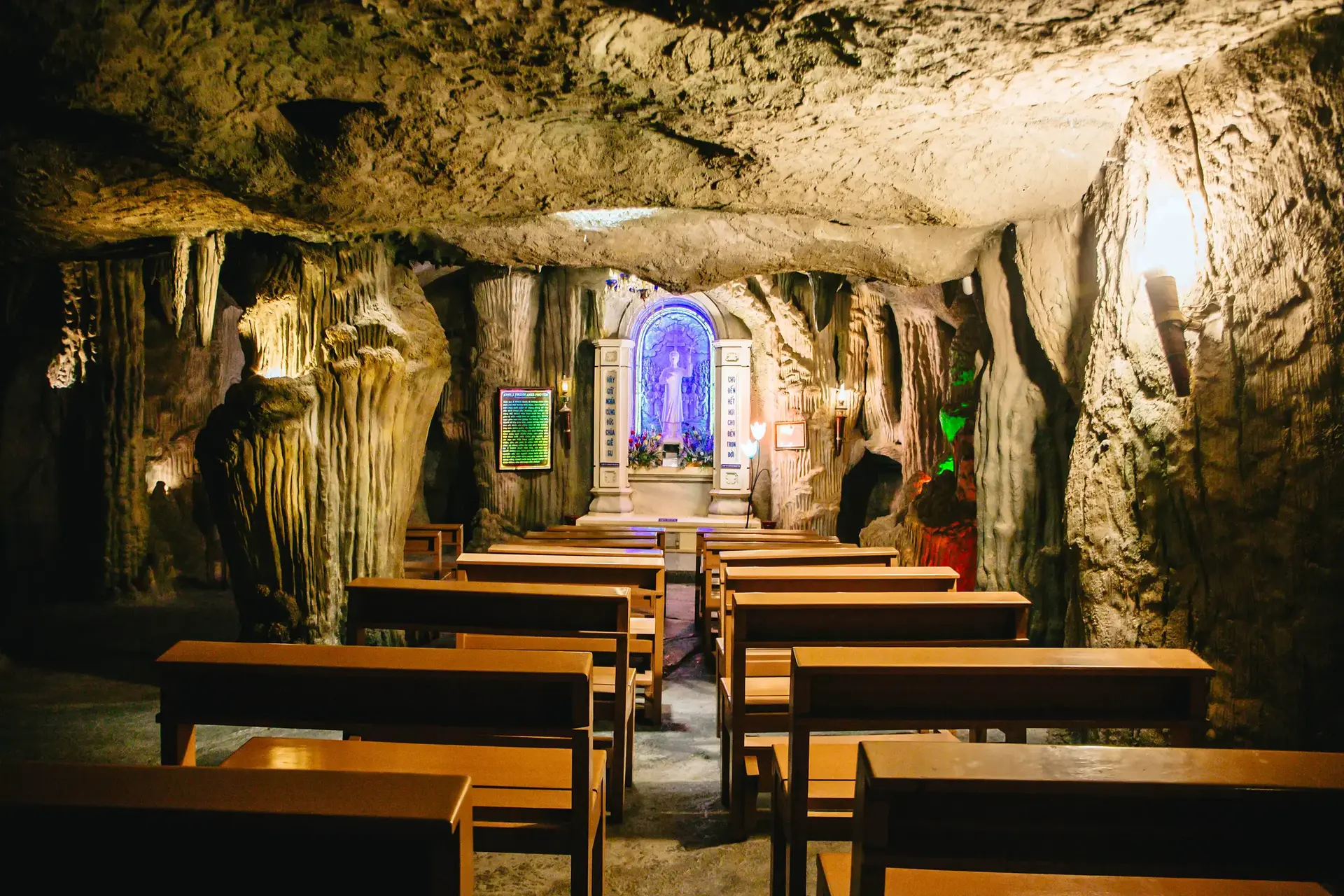
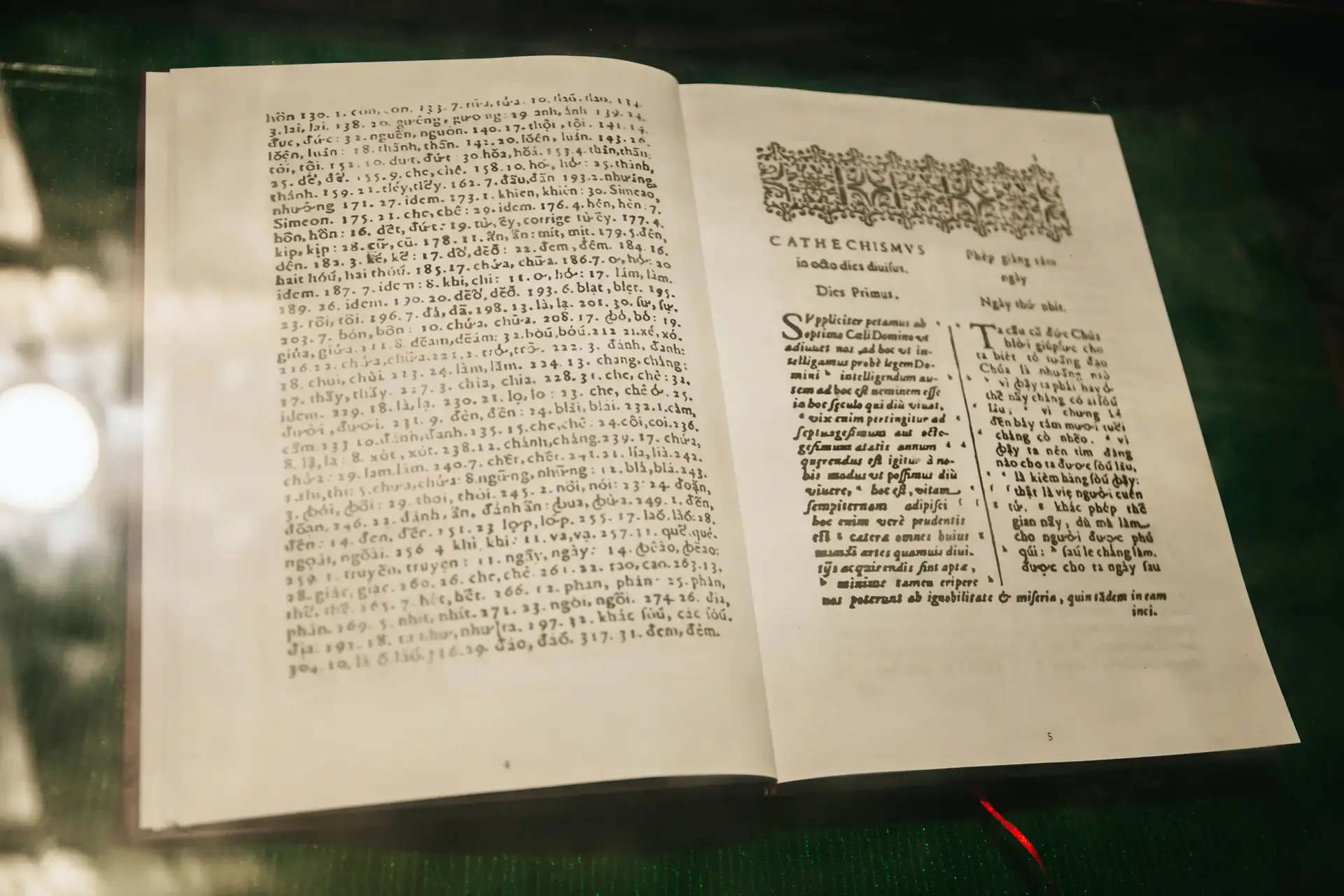
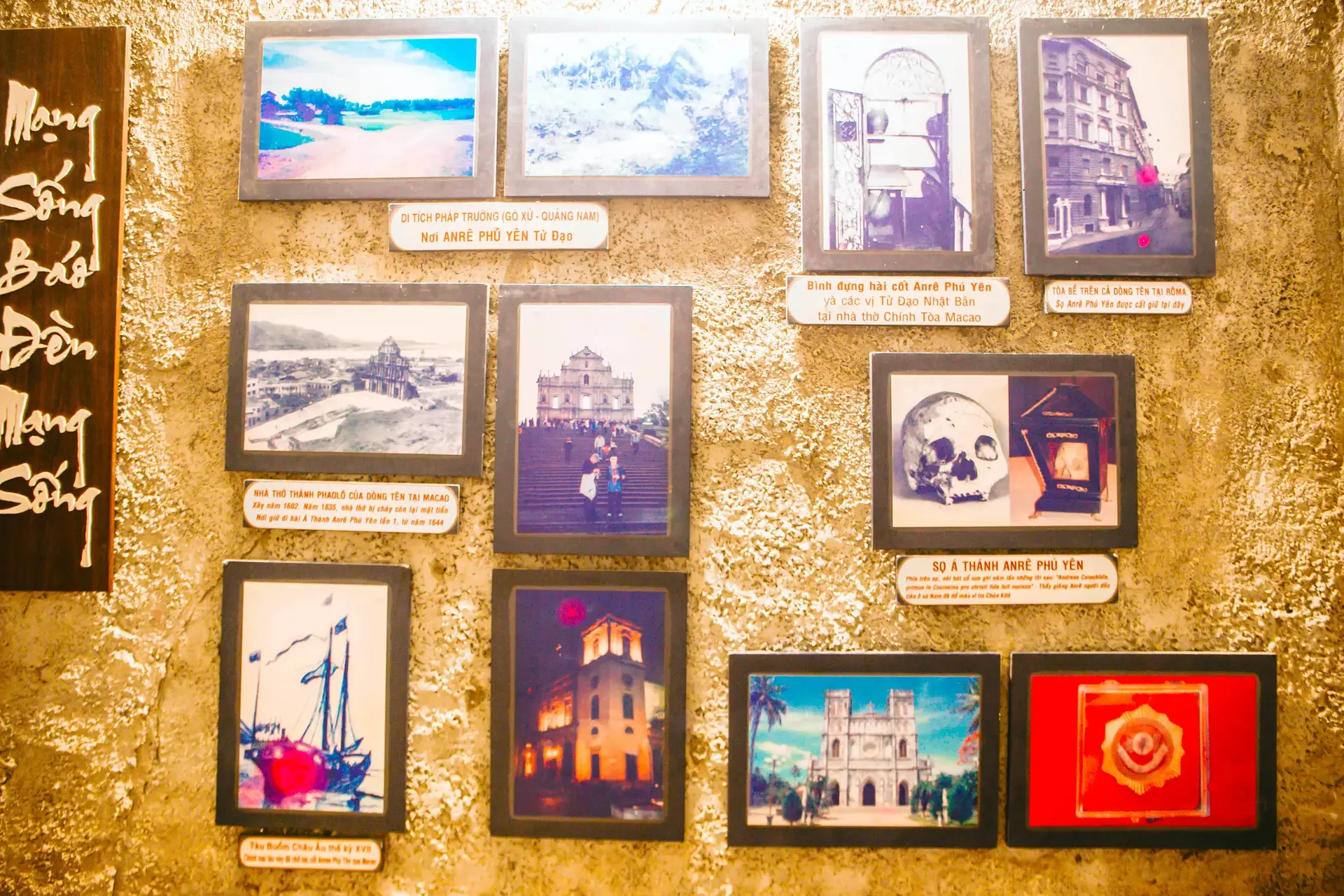
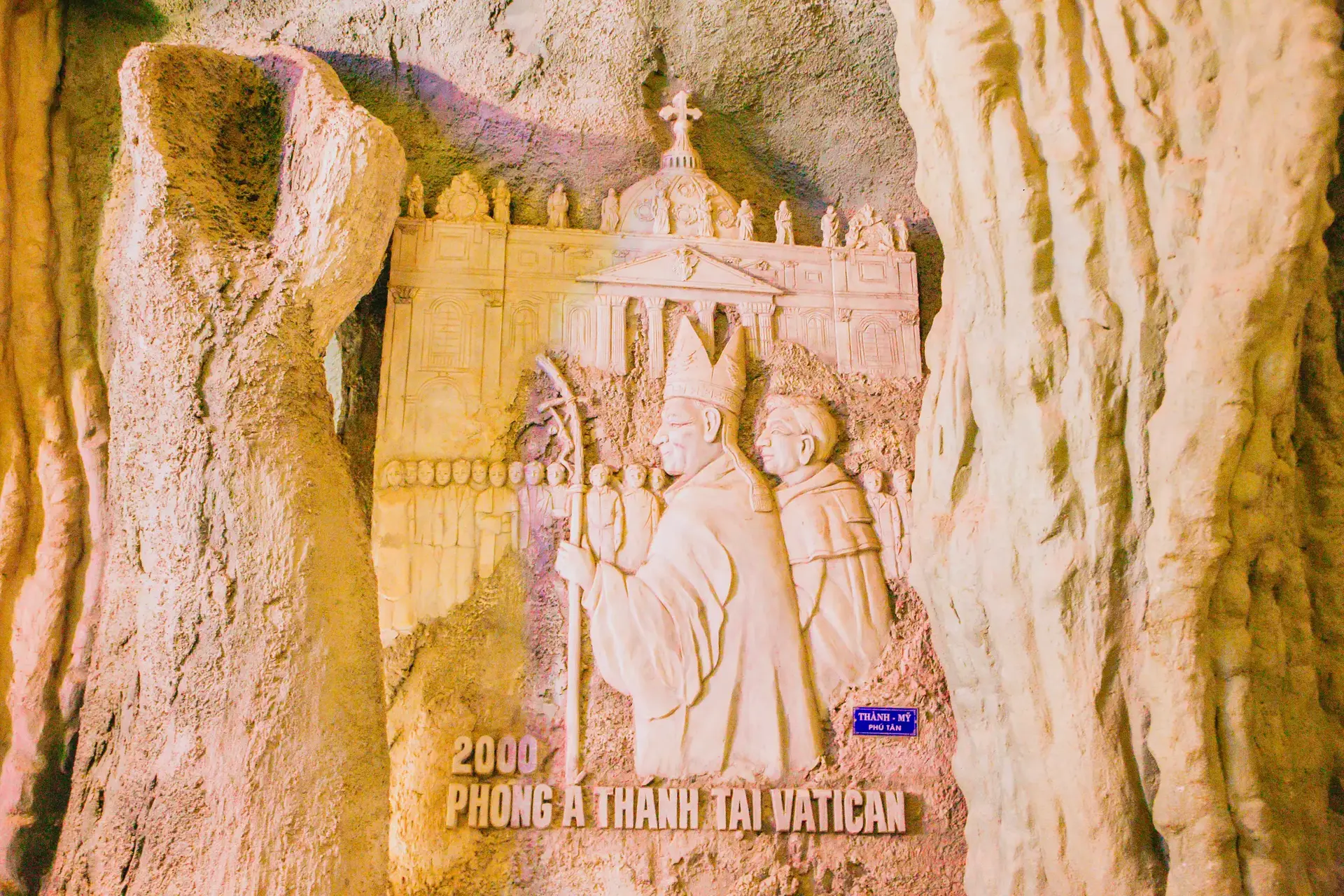
In the church grounds, a fake hill covered with green grass has a door leading to the rock cave. Stepping from the outside to the inside, the pieces of the past preserved here are "unveiled" one after another. This cave is a miniature museum that stores documents, reliefs, and pictures about the life of Blessed Anne Phu Yen along with the image of Mang Lang church through each period. In particular, this place also holds the first national language book.
Photo: Xuan Phuong
According to Saigoneer
